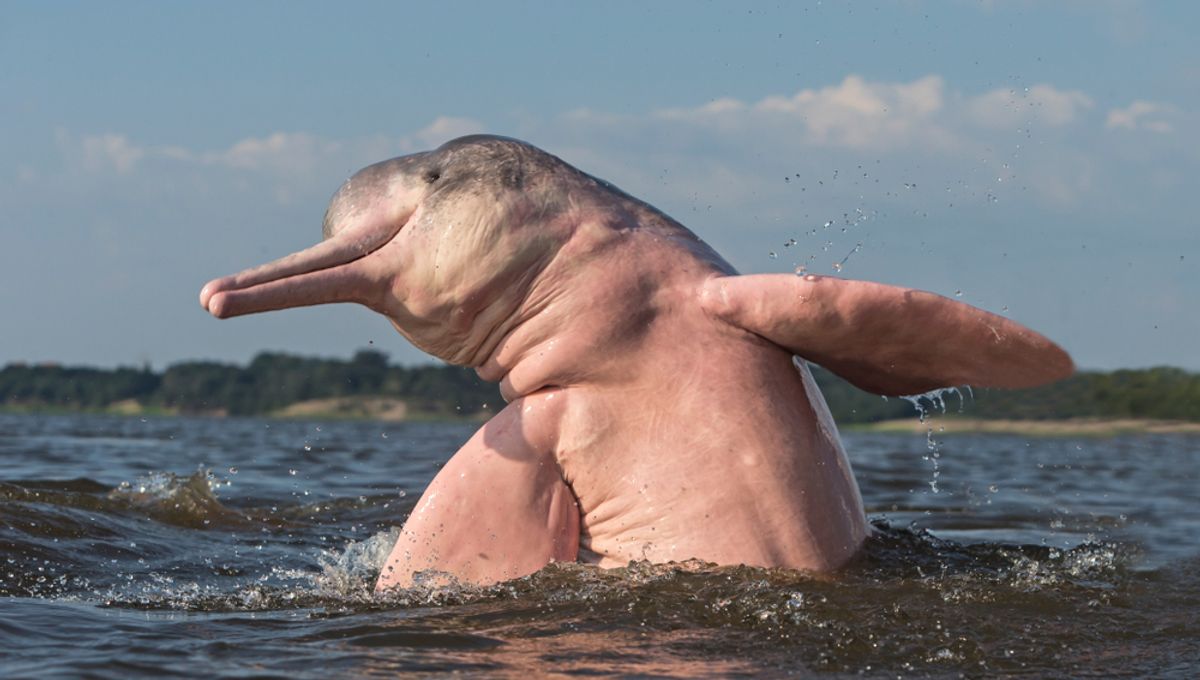
Over 120 river dolphins have died in the Brazilian Amazon in the wake of an extreme drought and water temperatures reaching 38.8°C (102°F).
Researchers at the Mamirauá Institute told Reuters that dozens of dolphins had died over the past week in the region around Tefé Lake. They added that roughly 80 percent of deceased dolphins are pink dolphins, called “botos” in Brazil, which could represent 10 percent of their local population.
This is extremely bad news for the species, which is already considered to be in danger of extinction by the IUCN Red List due to its declining population numbers and the myriad threats it faces.
Many other rivers within the Brazilian Amazon have reported that thousands of fish have also died in unusual circumstances.
The precise cause of the mass die-off is not clear yet. Experts are currently investigating whether an infection or toxin could be at play, but many are already pinning the blame on the incredibly hot and dry weather that the area is currently enduring.
Brazil’s Amazon is currently in the midst of an extreme drought and some experts are forecasting that it could last until early 2024. One of the big factors behind this weather is El Niño, the climate pattern that is known to inhibit the formation of rain clouds here and further reduce rainfall recorded during the dry season.
Beyond the plight of the river’s dolphins, the dry weather is also causing problems for the many communities in the Amazon region. In the dense rainforest where few reliable roads exist, many rely on the waterways to access resources and travel.
As a result of the river waters, around 90 percent of vessels are now operating with some kind of restriction in the state of Amazonas, severing riverside communities from vital supplies, Mongabay reports.
Along with dwindling supplies of essentials like drinking water, food, and fuel, some are facing a shortage of medicines and medical expertise, creating the perfect recipe for a health disaster.
“We have worsening respiratory diseases, diarrhea, and other health problems associated with the drought. We depend on a river connection to help patients. The current situation is unthinkable,” David Bemerguy, the mayor of Benjamin Constant, a municipality located in the Brazilian state of Amazonas, told Mongabay.
“The situation is delicate, with the risk of total shortages if the river continues to recede,” Bemerguy added. “It’s the worst drought ever seen here because the river has more sandbanks, with less navigability.”
Source Link: Over 120 Dead Dolphins Wash Up In Amazon As Water Temps Hit Nearly 39°C